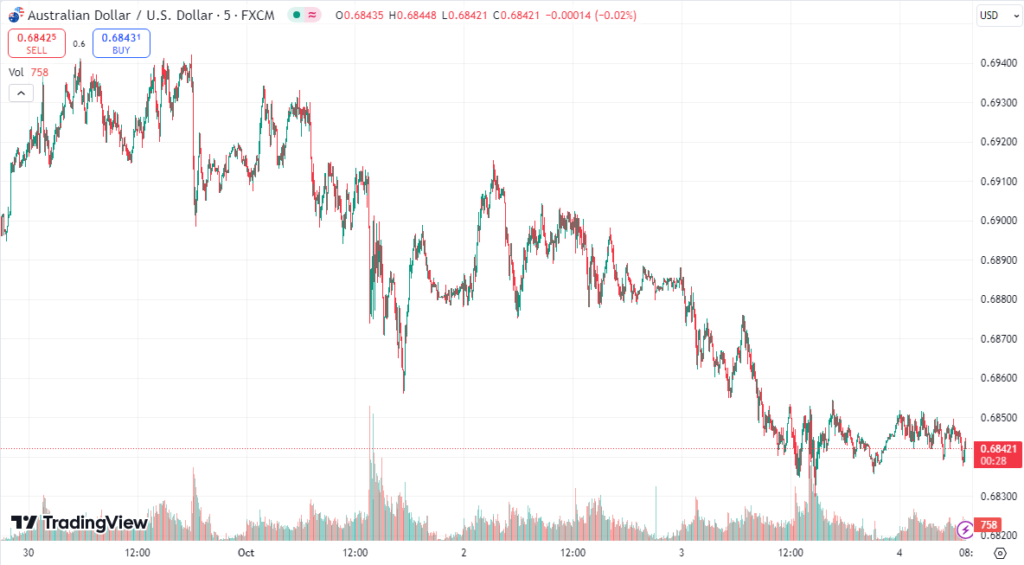On Thursday, the Australian dollar remained stable, and investors were keeping a close eye on the United States Non-Farm Payrolls report in order to gain additional insight into the Federal Reserve’s strategy.
The Australian dollar has been able to hold its position despite the fact that the United States dollar is having difficulty gaining traction. This is due to the fact that there is a more optimistic feeling on global development, as well as a lull in the expectations of a rate hike in the United States.
As traders anticipate the labor market data, which is expected to be released on Friday, the United States dollar has recently experienced a decline. This data has the potential to provide crucial insights into the strength of the United States economy and to affect the future actions of the Federal Reserve.
A number of non-farm payrolls that is lower than anticipated might lend credence to the argument that the Federal Reserve should halt its rate hikes. This would encourage the greenback to remain under pressure, which would be beneficial for higher-risk currencies such as the Australian dollar.
The Reserve Bank of Australia (RBA) has recently signaled that it may be reaching the conclusion of its own tightening cycle, which has provided the Australian dollar with support. Additionally, stable commodities prices have found support for the Australian dollar.
The Reserve Bank of Australia (RBA) has taken a cautious approach, which has, so far, corresponded nicely with the easing in the strength of the United States dollar. This has provided a cushion for the Australian dollar despite the uncertainties that exist in the global economy.

A surprisingly good employment report from the United States might reinvigorate expectations of more aggressive action from the Federal Reserve, which could potentially reverse the recent softening in the exchange rate of the dollar and put pressure on the Australian currency. Traders continue to exercise caution in advance of the jobs data.
The Australian dollar is expected to finish the week with its gains intact, providing that the data from the United States does not change the overall market narrative on interest rates and the durability of the economy before the end of the week.













